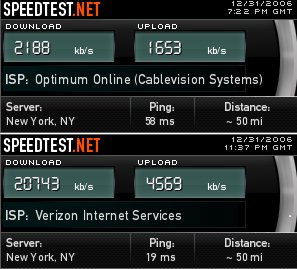Since we have picked up a subject of money in the previous post, I thought I’d pick up where I left off. Obviously, having enough supplies is important – while you can get away without a thing or two, in general supplies are what makes your business running. It’s the grease for the wheels. As with all logistical issues too many can be just as bad as too few.
At the beginning of operations we have agreed not to spend much time on supply hunting, preferring the convenience of fast delivery to price. With that in mind we signed up for Amazon Prime and that solved our problem of ordering when we “almost ran out” of something. Most of supply items are eligible for Prime and, therefore, delivered for free through two-day shipping. They would be overpriced items, at least at the beginning, but we have decided that given small space we were allowed to operate in and inability to stock up (and take advantage of wholesale price) might as well be offset by prompt delivery time. This was especially true during certain promotions, when we started running out of things differently than before.
Once the business had a full schedule and had run through the motions a few times, the time has come to the point where we could optimize the costs. Knowing what we needed and how often allowed us to order certain things in advance forgoing Prime shipping, but winning on the cost of the items. Additionally, certain items were being replaced with their less expensive equivalents: do you really need one of the most expensive paper towel s to wipe equipment clean after disinfection or can you do away with cheaper brand? Having certain predictability allowed us to forgo Amazon completely and order from other merchants, who don’t quite adhere to such strict shipping policies.
Yet another thing on our savings list was to verify if we, indeed, needed to use certain things at all. For example, we always offered single use razors for patients who forgot to shave the treatment area prior to their appointment. It sounded like a pretty neat idea at the beginning, taking care of your clients and all. What we’ve discovered was that it significantly increased the length of individual appointment (what could have taken 10 minutes dragged for full half hour), is totally unpredictable (we only learned of the situation at the moment a client walked in) and person who decided to shave on the spot still felt very uncomfortable. This led to major schedule shifts, people waiting excessive amounts of time or even leaving without receiving a treatment. From almost any point of view this benefit was creating more trouble than it was worth. We decided to ditch razors altogether. We changed the language on any promotional items requiring the shave and stating that person who didn’t shave will not receive the treatment and lose their appointment or session (in case of a voucher from a deal site). While it may sound a bit tough on customers we actually received a positive feedback on this move as schedule became just a little more predictable. And we dropped purchasing one item off our supply list.
The always fluid nature of offers on the market creates a never ending quest to seek the most efficient way to supply your own business. This takes time and goes along with “deal hunting” (that I was frowning upon in two previous articles). The upside is that you are getting merchandise, not services, and therefore can always objectively assess whether you are getting a good deal or not.
Error: Your requested Widget "text" is not in the "Widgets for Shortcodes" sidebar
- [do_widget_area sidebar-1]
- [do_widget id="recent-posts-2"]
- [do_widget id="custom_html-2"]
- [do_widget id="links-2"]
- [do_widget id="custom_html-4"]
- [do_widget id="tag_cloud-3"]
- [do_widget_area sidebar-2]
- [do_widget_area widgets_for_shortcodes]
- [do_widget id="text-7"]
- [do_widget_area wp_inactive_widgets]
- [do_widget id="nav_menu-2"]
- [do_widget id="pages-2"]
- [do_widget id="archives-2"]
- [do_widget id="meta-2"]
- [do_widget id="search-2"]
- [do_widget id="recent-comments-2"]
- [do_widget id="tag_cloud-2"]
 The battle rages on – every day when I happen to turn on the TV I see more and more commercials for Optimum TriplePlay, that includes cable TV, internet and phone services. Less then a month ago I’ve seen just as many commercials about Verizon FiOS – again, same old three – TV, phone and internet services in one package.
The battle rages on – every day when I happen to turn on the TV I see more and more commercials for Optimum TriplePlay, that includes cable TV, internet and phone services. Less then a month ago I’ve seen just as many commercials about Verizon FiOS – again, same old three – TV, phone and internet services in one package.